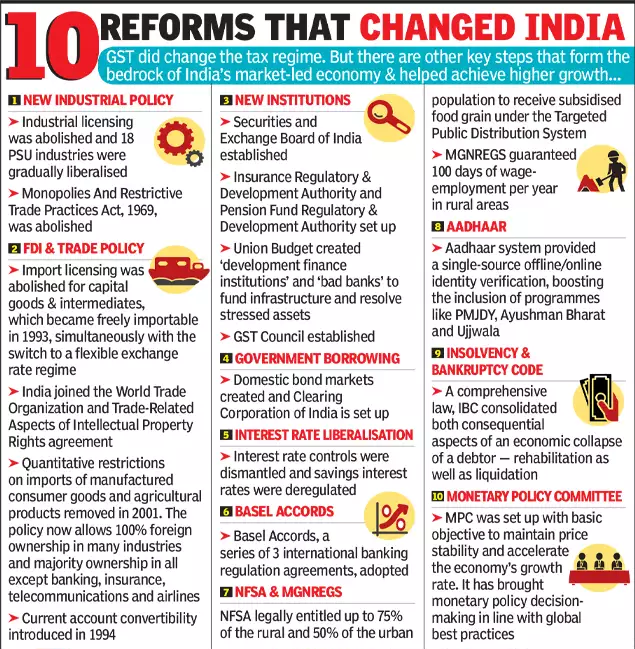Indian Economy
30 Years of Economic Liberalisation
- 26 Jul 2021
- 4 min read
Why in News
Recently, on the 30th anniversary of the economic liberalisation reforms, former Prime Minister of India, Manmohan Singh, raised concerns over the macro-economic stability of the country.
- According to him, the current economic crisis triggered by the Covid-19 pandemic is more challenging than during the 1991 economic crisis and the nation would need to recalibrate its priorities to ensure a dignified life for all Indians.
Key Points
- 1991 Crisis & Reforms:
- 1991 Crisis: In 1990-91, India faced a severe Balance of Payments (BOP) crisis, where its foreign exchange reserves were just adequate to finance 15 days of imports. There were many factors that led to the BOP crisis:
- Fiscal Deficit: The fiscal deficit during 1990-91 was around 8.4% of GDP.
- Gulf War I: In 1990-91, the situation was aggravated by the rise in the price of oil due to Iraq’s invasion of Kuwait.
- Rise in Prices: The inflation rate increased from 6.7% to 16.7% due to a rapid increase in money supply and the country’s economic position became worse.
- Nature and Scope of 1991 Reforms: In order to get out of the macro-economic crisis in 1991, India launched a New Economic Policy, which was based on LPG or Liberalisation, Privatisation and Globalisation model.
- Then Finance Minister, Manmohan Singh, was the prime architect of the historic 1991 liberalisation.
- The broad range of reforms under the LPG model included:
- Liberalising Industrial Policy: Abolition of industrial license permit raj, Reduction in import tariffs, etc.
- Beginning of Privatisation: Deregulation of markets, Banking reforms, etc.
- Globalisation: Exchange rate correction, liberalising foreign direct investment and trade policies, Removal of mandatory convertibility cause, etc.
- These reforms are credited and applauded for the high economic growth seen from 1991 to 2011 and substantial reduction of poverty from 2005 to 2015.
- 1991 Crisis: In 1990-91, India faced a severe Balance of Payments (BOP) crisis, where its foreign exchange reserves were just adequate to finance 15 days of imports. There were many factors that led to the BOP crisis:
- 2021 Crisis:
- The World Economic Outlook Report 2021, states that the Indian economy is expected to grow by 12.5% in 2021 and 6.9% in 2022.
- However, the pandemic has massive unemployment in the informal sector and poverty is increasing after decades of decline.
- The social sectors of health and education have lagged behind and not kept pace with our economic progress.
- Too many lives and livelihoods have been lost that should not have been, during the pandemic.
- Inspector Raj is set to make a comeback through the policy for e-commerce entities.
- India is back to the old habits of borrowing excessively or extracting money (in form of dividends) from the RBI to finance the fiscal deficit.
- The migrant labour crisis has laid bare the gaps in the growth model.
- India foreign trade policy is again suspecting trade liberalisation, as India has already decided to opt-out of the 16-nation Regional Comprehensive Economic Partnership (RCEP) trade deal.
- The World Economic Outlook Report 2021, states that the Indian economy is expected to grow by 12.5% in 2021 and 6.9% in 2022.
Way Forward
The 1991 reforms helped the economy stave off a crisis and then bloom. It is time to outline a credible new reform agenda that will not just bring GDP back to pre-crisis levels, but also ensure growth rates higher than it had when it entered the pandemic.





